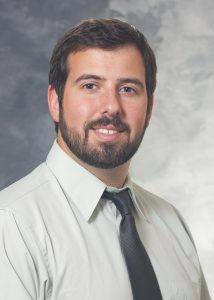- COVID-19
- Dissemination and Implementation
- Engagement in Care
- HIPxChange
- Infectious Disease
- Quality and Safety
*Free registration is required to use the toolkits provided within HIPxChange. This information is required by our funders and is used to determine the impact of the materials posted on the website.
Background
The COVID-19 pandemic has put new constraints on the care of patients. Concerns about viral transmission, limiting exposure, proper PPE utilization, and evolving best practices in caring for patients with a novel viral disease has led to healthcare workers feeling high levels of uncertainty and has left healthcare systems scrambling to prepare their staff for sudden surges in patients.
The WIRED-RT COVID-19 Simulation Curriculum Toolkit was designed to help health systems and healthcare providers prepare for surges in COVID-19 cases. They focus on proper PPE utilization, infection control practices, and patient care best-practices as of the date of publication. The four included cases cover emergent intubation, use of high-flow oxygen delivery, cardiac arrest care, and safe intra-and inter-hospital transport protocols for patients with COVID-19. The cases will help prepare interprofessional teams of healthcare workers to safely and effectively care for their patients, improve communication, and obtain deliberate practice in high-stakes, high-acuity, low-frequency care events.
Who should use this toolkit?
This toolkit is intended for use by healthcare educators and quality assurance professionals who are facile with simulation education techniques. These cases are designed to be run for practicing healthcare practitioners who currently are, or will be, caring for patients with COVID-19.
What does the toolkit contain?
Each of the four cases within the WIRED-RT COVID-19 Simulation Curriculum Toolkit provides a full case guide, including:
- a case overview
- a set-up guide
- pre-briefing materials
- a facilitation guide
- facilitation powerpoint
- a facilitation checklist
- a debriefing guide
- a video example of the case
The cases were designed to run with high-technology simulation equipment, but this level of technology is not required, and they could easily be adapted to whatever level of technology is available to the educator.
How should these tools be used?
The materials in this toolkit:
- Can be used as-is for educators or quality assurance professionals as educational materials to facilitate simulation exercises to prepare their staff for surges in COVID-19 patients.
- Can be adapted to fit the education or quality needs of the specific healthcare team or system, including adaptation for pre-hospital providers.
A copy of the survey instruments and information on adapting them is available in this PDF file. Additionally, to allow you to easily adapt the instruments for use in your organization, they are provided as separate file in Microsoft Word, Excel, and PowerPoint that you can download on the HIPxChange site.
Development of this toolkit
The WIRED-RT COVID-19 Simulation Curriculum toolkit was developed by researchers, educators, and clinicians (Principal Investigator: Manish N. Shah, MD, MPH) at the University of Wisconsin-Madison School of Medicine & Public Health – BerbeeWalsh Department of Emergency Medicine. This project was supported by grant funding from the Wisconsin Partnership Program. Additional support was provided by the University of Wisconsin School of Medicine and Public Health’s Health Innovation Program (HIP), the Wisconsin Partnership Program, and the Community-Academic Partnerships core of the University of Wisconsin Institute for Clinical and Translational Research (UW ICTR), UL1TR002373 from the National Center for Advancing Translational Sciences. The content is solely the responsibility of the authors and does not necessarily represent the official views of the National Institutes of Health or other funders.
Please send questions, comments and suggestions to HIPxChange@hip.wisc.edu





 Ryan Thompson, MD, CHSE
Ryan Thompson, MD, CHSE


